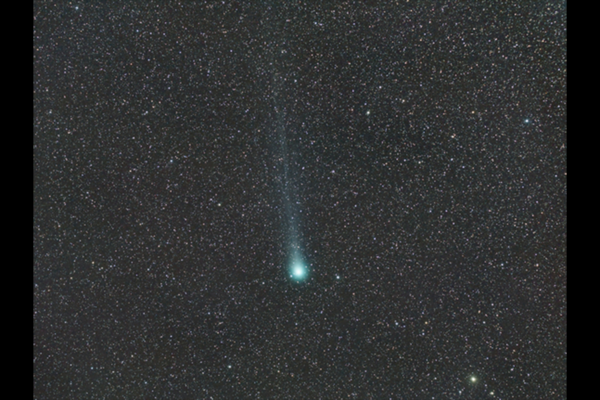A study published in the journal Science Advances by researchers from the Institut de Radioastronomie Millimétrique in Spain suggest 21 complex organic molecules, including ethyl alcohol and simple sugar glycolalde, have been detected in the cloud material ejected by Comet Lovejoy as it neared the sun - signifying that elements for building life was already present in our solar system long before Earth and other planets were formed.
Comet Lovejoy streamed very close to our sun in January this year, and various materials were found in the cloud of compounds it dissipated as it neared the sun. Intensive analysis showed most of these were carbon-containing compounds that have been seen in sunlike stars that are just forming, but then a total of 21 different complex organic molecules were also detected in the cloud of compounds streaming from Lovejoy.
This, according to study lead author Nicolas Biver of the Paris Observatory, "suggests that our proto-planetary nebula was already enriched in complex organic molecules (as disk models suggested) when comets and planets formed."
Using the 100-foot-wide (30 meters) radio telescope of the Institut de Radioastronomie Millimétrique in Spain, Biver and his colleagues were able to fully study Comet Lovejoy as it neared our sun. While the observation was going on, Lovejoy was about 0.6 astronomical units (AU) from Earth and 1.3 AU from the sun. Meanwhile, one AU is the distance from Earth to the sun, about 93 million miles, or 150 million kilometers.
The scientists were able to detect the organic compounds in the comet's wake because the heat from the sun sort of melted them out into space.
The ethyl alcohol and simple sugar glycolaldehyde seen among the complex organics had never been seen in a comet. But the scientists calculated, relative to water, the amount of each of the 21 organic molecules and compared them to those of the Comet Hale-Bopp seen close to Earth in 1997.
Further studies showed that Uranus, Jupiter, Neptune, and Saturn - the four largest planets in our solar system, moved to their present positions during the early formation stages of planets; and the migration caused thousands of comets to stream toward Earth and Mars 4 billion years ago.
"So even if Earth was born dry and depleted of volatile elements, complex organics formed further away may have been supplied in large amount via comet nuclei early and certainly contributed to the emergence of more-complex molecules and ultimately life," Biver and his colleagues wrote in the study.



























